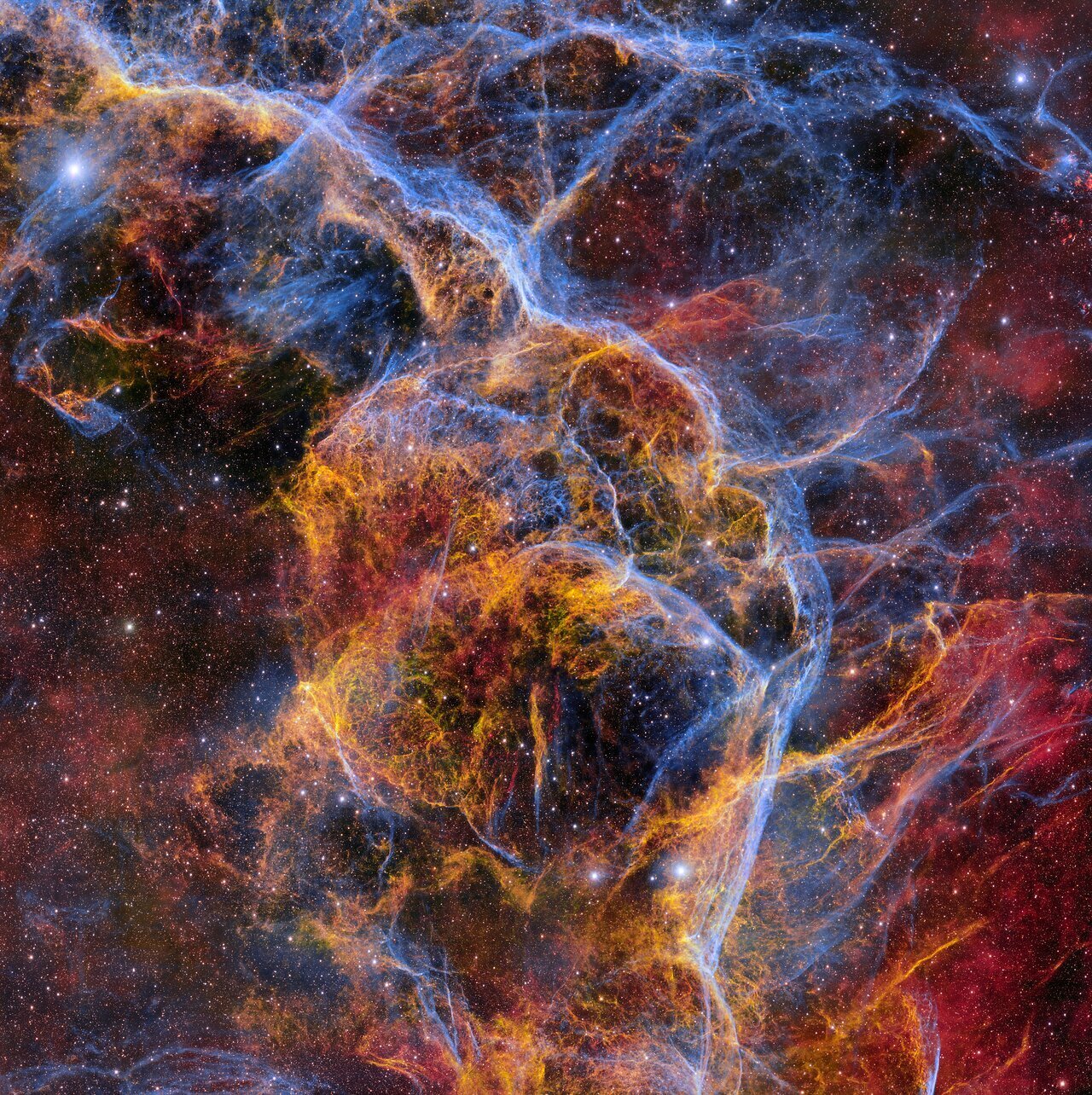Around 11,000 years ago, a giant star exploded. But its corpse remains.
Astronomers used a powerful camera mounted to the National Science Foundation’s Víctor M. Blanco 4-meter Telescope in the lofty Chilean mountains to snap an extremely detailed view of the “Vela Supernova Remnant” — the leftovers of this ancient cosmic blast. It’s now a region of churning gas, expanding further into space.
“The Vela Supernova Remnant is merely the ghost of a massive star that once was,” the NSF’s NOIRLab, which runs big telescopes across the U.S. and elsewhere, said in a statement.
The images above and below show the central part of the stellar corpse. In total, it’s huge, as the star’s gas continues expanding into space. It’s left those blue and yellow “tendrils” of gas.
“The Vela Supernova Remnant is a gigantic structure, spanning almost 100 light-years and extending to 20 times the diameter of the full moon in the night sky,” NOIRLab explained.
The exploded remnants, however, are 800 light-years away. So a powerful telescope, and camera, are needed to capture this level of detail. The digital camera responsible is the Department of Energy’s Dark Energy Camera, itself boasting a 3.3-foot (nearly 1 meter) lens.
The cosmic vista is so expansive that the labeled image below identifies other objects — such as a star cluster and other nebulae (clouds of dust and gas) — amid the view of the Vela Supernova Remnant. Also noted is the shock wave from the star’s explosion, long ago.
Credit: CTIO / NOIRLab / DOE / NSF / AURA // Image Processing: T.A. Rector (University of Alaska Anchorage / NSF’s NOIRLab) / M. Zamani & D. de Martin (NSF’s NOIRLab)
Stellar explosions are a critical part of the cosmos. Before collapsing on themselves, massive stars use the immense pressure in their cores to fuse helium into carbon. After thousands of years, they fuse carbon and helium to create oxygen, and the forging process continues, ultimately creating metals like iron (an important component of our blood). The eventual blast spreads these vital elements through space. The next solar systems, and planets, can use these newly created materials.
Sometimes collapsing stars form black holes — which are so massive and gravitationally powerful that not even light can escape. Other times, they create an extremely dense object, called a neutron star. Just a sugar-cube-sized piece of this extremely dense material weighs 1 billion tons. The particular stellar collapse 11,000 years ago created such a star, which astronomers call “Vela Pulsar.” You can find this small, though powerful, star’s location in the bottom left of the image.
Space, folks, continues to be hardcore.










